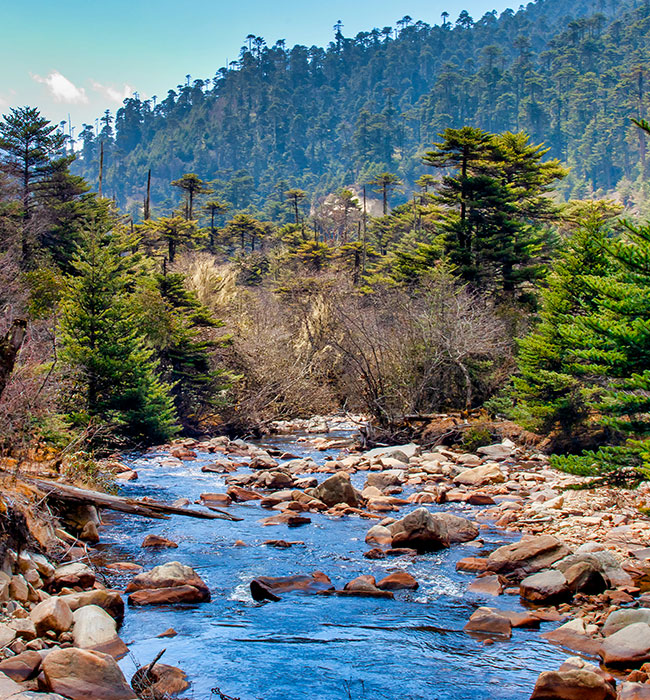
The Royal Manas National Park is a UNESCO heritage site, along with its neighbour across the border, the greater Indian Manas. Ecolodges within the sanctuary have been established to create a partnership for the local communities, in a give-and-take scheme to promote conservation efforts which is a noble arrangement supported by the World Wide Fund for natre WWF and the Forest Services. Located amidst the wilderness for a peaceful stay the park allows tourists to encounter a wide variety of flora and fauna.
Sighting of wildlife, birds and butterflies (summer) is frequent, with great opportunities for wildlife appreciation and photography. Grab this chance to see endangered and least-seen species of wildlife.
Authentic traditional bamboo crafts and souvenirs may be bought.
Community festivals, traditional events and engagements like farming, harvests and associated traditional rituals and customs are part of the package.
Bicycling options are there between Pantang-Panbang ecolodges, passing through magnificent natural landscapes.
Check out the saltlick site for wildlife in Norbugang, where wildlife congregates.
Unexplored limestone caves lie close to the Shyllingtoe ecolodge.
Gentle rafting along the Manas River may be availed of, with good prospects of sighting wildlife and birds.
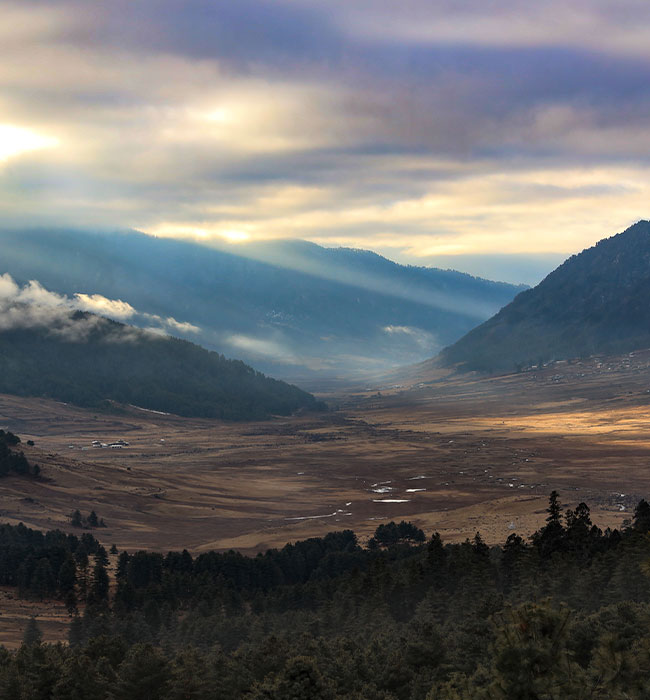
Phobjikha’s charm lies in the beautiful and wide valley that is a winter home to the endangered Black-necked Cranes, believed to be sacred and a blessing for the valley, and showcases the co-existence of community and birds in perfect harmony. The Royal Society for Protection of Nature has adopted Phobjikha Valley as a conservation area and focuses on protecting the cranes through programmes designed to benefit the communities through tourism, while the communities act as guardians of the conservation efforts.
Gangtey monastery on a hillock overlooking the wide awe-inspiring valley is a must-see.
Bask in the warm hospitality of community homestay operators and local guides.
Find local souvenirs; learn to make them.
Get to see the White-bellied Herons.
Be up close and personal with the Black-necked Cranes that arrive from Tibet in winter months (of the 15 species of cranes, this was the latest discovery) [up until Jan 22, 2014 there were 422 cranes sighted in Phobjikha.
Hire a bicycle from the Community Bicycle Rental Service and bike around the trails connecting different segments of the valley.
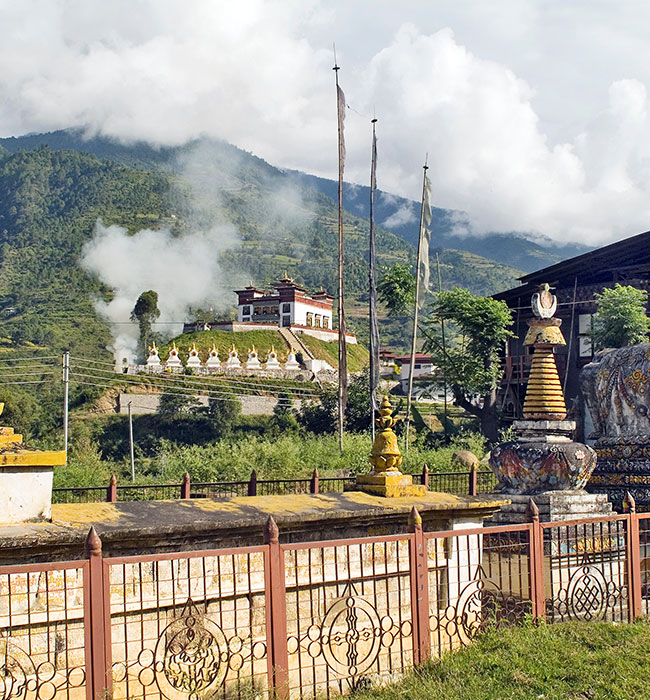
The marathon route is mostly rural and approximately 50% on pack dirt and 50% on pavement. The marathon starts from 6700 feet and descends towards Punakha.
The racers run beside the Mochhu River, through the rural hamlets of Punakha Valley, with views of the magnificent Khamsum Yulley Namgyel temple, monasteries, rice fields and forests, and even across a suspension bridge, to finish at the picturesque Punakha Dzong.
Nowhere in the world would a marathon have such stunning surroundings and elevation.
Experience rural villages, spiritual hermitages and the fresh air of pristine Mother Nature along these 42km and 21km paths. Run over a suspension bridge.
See the unique and magnificent Khamsum Yulley Namgyel Chorten and the imposing Punakha Dzong at the confluence of the two rivers Phochhu and Mochhu Watch cultural programs presented by local communities.
Support Bhutan’s Youth and Olympic Sports programs through your contributions in this run. Come for the event, and stay for the travel experience of a lifetime.
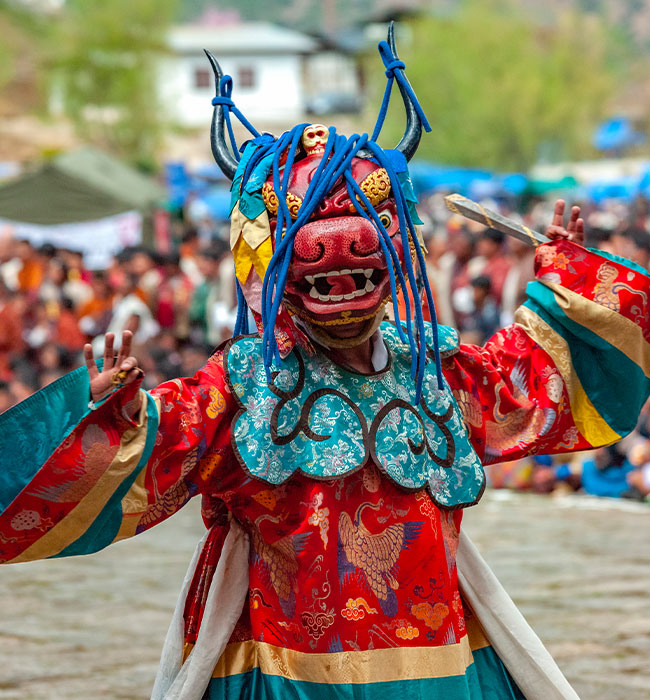
Eastern Bhutan has many dialects spoken and a very rich variation of customs subtly different from Western Bhutan. Discover the differences that enrich Bhutanese culture. Nested on a high plateau is the home of the impressive masked dance of the drums called the Dremitse Nga Cham.
The dance is recognised as a UNESCO cultural heritage and is performed by dancers wearing masks featuring various wildlife, who beat drums in unison. The dance is now performed at most touches all over the country. Enter the world of unexplored trekking, historical and cultural escapes, great scenery, traditional textile making and natural wonders.
Enter the world of unexplored trekking, historical and cultural escapes, great scenery, traditional textile making and natural wonders. Get to see dzongs built without any construction drawings or nails.
You must not miss this part of history at the Drametse Lhakhang, founded in the 16th century by Ani (nun) Cheten Zangmo, the granddaughter of the renowned religious master Terton Pema Lingpa (the treasure discoverer). According to the biography of the 6th Dalai Lama, Tshangyang Gyatso (17th century), Ani Cheten Zangmo was the incarnation of a celestial woman (dakini), strongly committed to the wellbeing of all sentient beings on earth.
Witness the Drametse Ngacham, proclaimed by UNESCO as a masterpiece of the oral and intangible cultural heritage of the world, in its place of origin. Visit Aja Ney, a sacred site, where you can receive blessings and wash away your sins. Welcome to Lhuentse, the most isolated district in Bhutan, with stark cliffs towering above river gorges and dense coniferous forests. This is the ancestral home of the Wangchuck Dynasty.
Go to Khoma village, for its elaborate woven cloth made of silk, called Kishuthara. One will get to see women weaving intricate designs and patterns with traditional looms. Get to Gangzur village, popular for women artisans with pottery skills. Taste some history, here at the Jangchubling monastery, founded in the 18th century. This is where the daughter of the 1st King, Ashi Wangmo, lived as a nun and transformed the sacred temple. In Trashiyangtse a small town famous for its handmade lathed daps and phobias (wooden containers and bowls).
Dapa-making is one of the oldest art forms in Bhutan. There are over 100 woodcarving families in Trashiyangtse. Visit Chorten Kora, fashioned after the Boudhanath temple in Nepal. Get to the easternmost point of Bhutan, Trashigang, where hill tribes, Merak and Sakteng people, are known for their remarkable features and costumes. Visit the very first institute of higher learning in Bhutan, Sherubtse College, founded in 1978. See Radhi, known as the “rice bowl of the East”, home to experts in weaving natural raw silk textiles.
Lastly, visit Dewathang, where the battle of Dewanagiri (old name for Dewathang), between Bhutan and British India, was fought in 1864. This war led to the signing of the 1865 treaty of Sinchula, which exchanged territories in Assam, Bengal and part of Dewanagiri in return for an annual subsidy from British India. Exit at the border town of Samdrupjongkhar, gateway to the Indian state of Assam, with the oldest cinema theatre in the country.
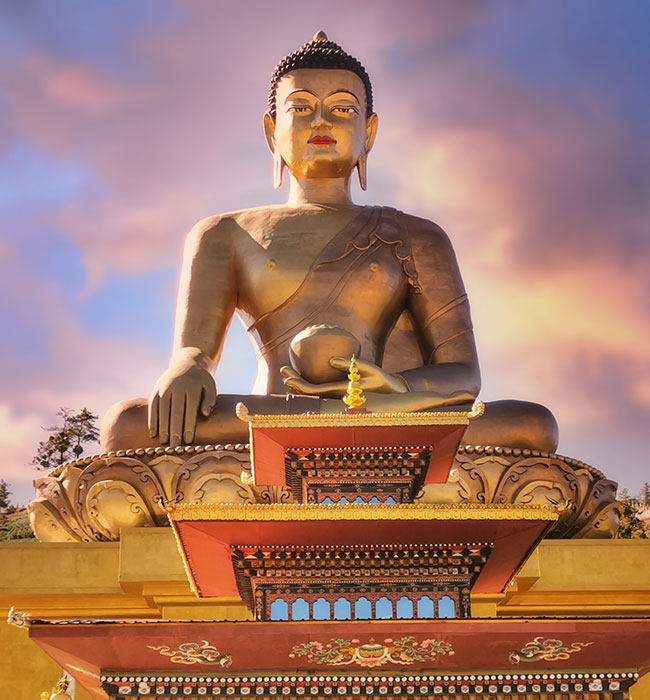
Conceptualised by the Fourth Druk Gyalpo (King) of Bhutan, the developmental philosophy and homespun concept of Gross National Happiness, as a developmental goal rather than GNP, has received recognition from, as well as posed a challenge for, the small nation worldwide. A tiny unknown country just a few decades ago is now at the centre of trying to convince the world outside that the ultimate goal of all progress is Happiness, rather than just material progress, which is just an aid to the process of fostering happiness.
The secret lies in effecting a balanced approach.
The package is an opportunity for visitors to intermingle with and understand the daily lives of common Bhutanese people, and to interact with proponents and scholars of GNH for a better understanding and assimilation of the concept and its practice in the Bhutanese dimension.
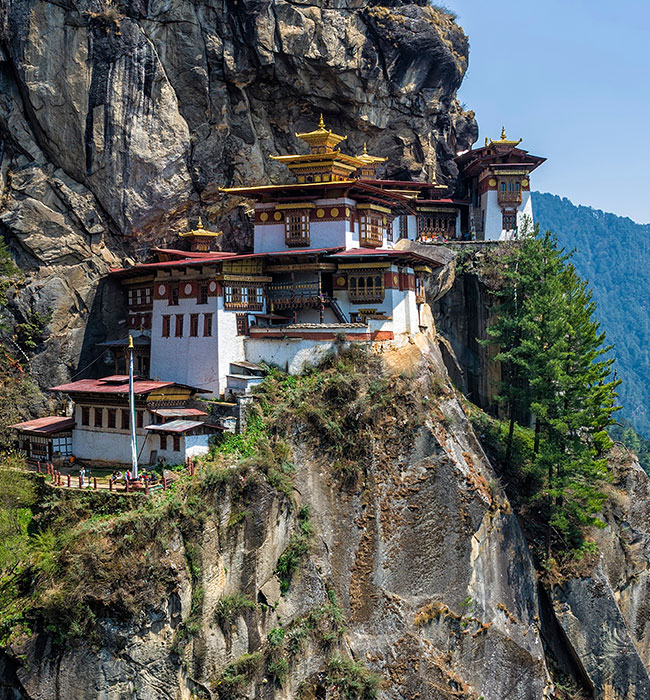
Conceptualised by His Majesty the Fourth Druk Gyalpo (King) of Bhutan, the developmental philosophy and homespun concept of Gross National Happiness, as a developmental goal rather than GNP, has received recognition from, as well as posed a challenge for, the small nation worldwide. A tiny unknown country just a few decades ago is now at the centre of trying to convince the world outside that the ultimate goal of all progress is Happiness, rather than just material progress, which is just an aid to the process of fostering happiness. The secret lies in effecting a balanced approach.
The package is an opportunity for visitors to intermingle with and understand the daily lives of common Bhutanese people, and to interact with proponents and scholars of GNH for a better understanding and assimilation of the concept and its practice in the Bhutanese dimension. Get a first-hand connection with the Happiness prescription. Interact with proponents and academics of GNH, and understand its practice in the Bhutanese context. See how GNH may be measured.
Gain access to literature, expert views, talks and interviews by GNH scholars, along with possible meets and conferences. Be made to feel at home by ready smiles and genuine greetings from the people you meet. Travel through beautiful landscapes and a pristine environment to appease the mind and generate the balance needed to imbibe the essence of the philosophy. Stay in monasteries and retreats to foster peace and tranquillity for deeper insight into contentment in the midst of the hurly-burly of life. Enjoy social interactions and partake in traditions, customs, cultural festivities and traditional sports.
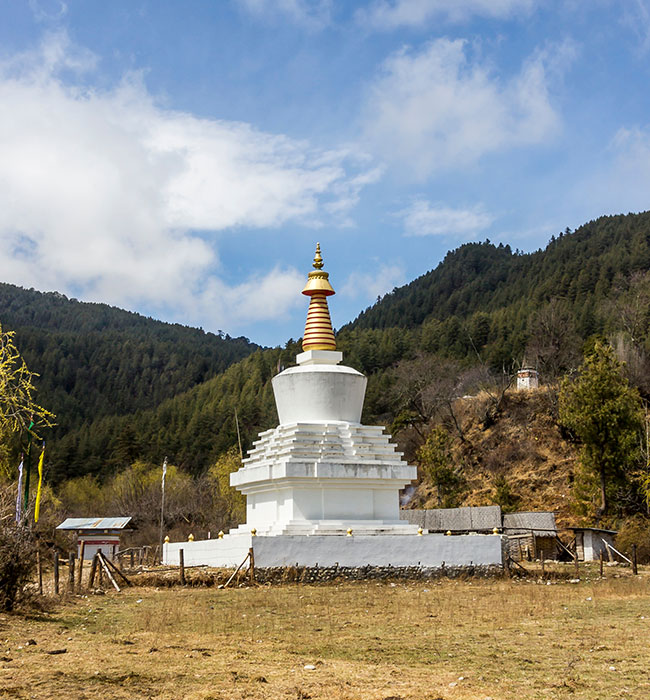
Cycle from Central Bhutan to the capital city in less than 24 hours. Considered one of the toughest bike races, the event is a one-day, 268km, cycling competition on a mountain bike. The race, which starts in Bumthang and culminates in Thimphu, crosses 4 high passes, ranging from 1200m to 3340m. Held every first Saturday of September, the tour is open to all bikers, national and international.
While participation in the main event would require only 3 days for a visitor, it is crucial for participants to at least practise and get acclimatised with the high passes pre-race. It will not be in vain, since most roads within Bhutan will climb to high passes, giving the visitor spectacular views and an opportunity to engage with locals and enjoy Bhutanese camaraderie and hospitality while practising.
The Tour of the Dragon starts in Bumthang, central Bhutan at 2610m (8560ft). The route passes through some of the highest mountain roads: Kiki La at 2870m (9420ft); Gaytsha at 2950m 9680ft; Yotongla at 3430m (11250ft); Trongsa at 2150m, (7050ft); Chendebji village 2430m (7970ft), Pelela 3430m (11250ft); Dochula at 3150m (10330ft) and ending in Thimphu at 2330m (7640ft).
During the ride through the five major districts of the 20 in Bhutan, riders will have excellent views on the never-ending winding roads, ride close to imposing ancient fortresses (Dzongs), encounter village settlements, and pass through extensive pine and mixed forests and farm fields. At Tshangkha, the route passes the headquarters of the Jigme Singye Wangchuck National Park.
Chendebji Chorten, built in the style of the great Boudhanath Stupa of Nepal, and the Chendebji village (2430m, 7970ft) are also on the way. As our Wangdue Phodrang and the Punakha Valley. The majestic Druk Wangyel chortens (108 stupas) at Dochula 3150m (10330ft) are a site to see, against a backdrop of the highest mountain peaks in Bhutan, like the Jomolhari 7326m (24035ft), Jichu Drake 6794m (22290ft), Gangkar Puensum 7570m (24,840ft).
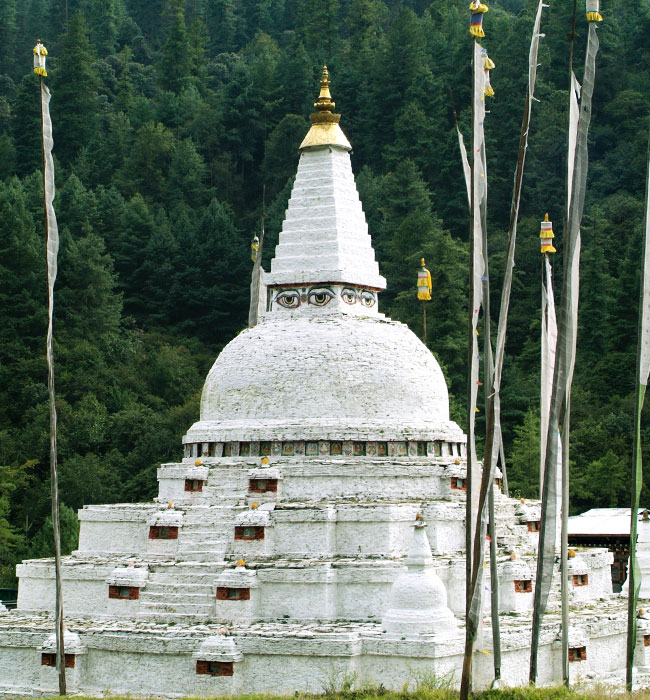
Discover the hereditary beginnings of the Wangchuck dynasty (the monarchs of Bhutan). The central region used to be the centre of power for the first and second kings. Trongsa is proud to this day of its administrative history, and its Royal Heritage Museum holds much information on the royal lineage of the five visionary and compassionate Kings of Bhutan.
See Trongsa Dzong, where the investiture ceremony of the Crown Prince, Jigme Khesar Namgyel Wangchuck, as the Choetse Penlop (Bhutan’s equivalent of the Brits’ Prince of Wales), took place in October 2004. Trongsa Dzong is of national significance; this is where the institution of monarchy began in Bhutan. Close to 500 years of architectural magnificence have been preserved to this day. Experience the 5-day annual tsechu in Dec./Jan. Visit Kuenga Rabten, where stands the palace of the first King (Sir) Ugyen Wangchuck.
An hour’s journey south of Trongsa is the winter palace of the 2nd King, where you can see a statue of the Sakyamuni Buddha. Visit the Karma Drubdey nunnery too. North of Trongsa, there is a farm road that leads to the Yuling village, where one may mingle with the local community. Take the adventure hike up for a beautiful meditational retreat at Taphey Goenpa. Drive from Trongsa to Jakar (Bumthang) and enjoy the scenic views en route.